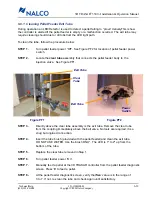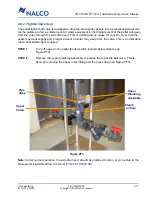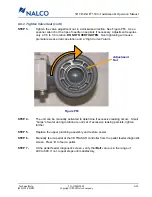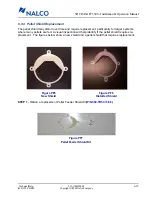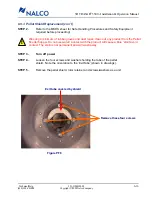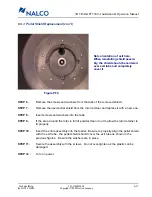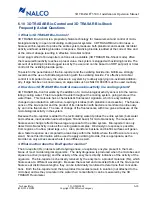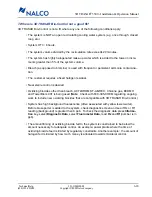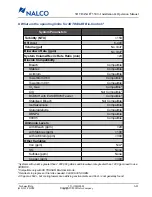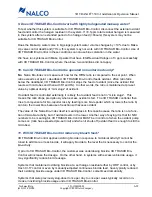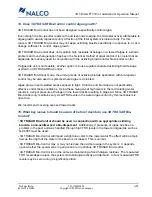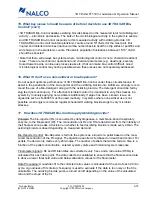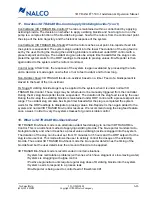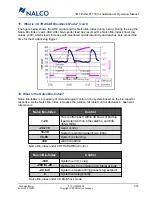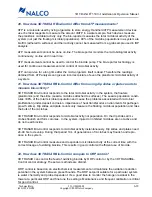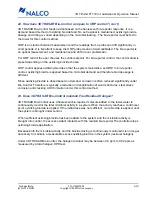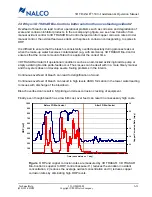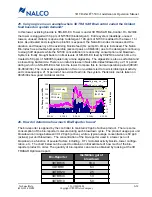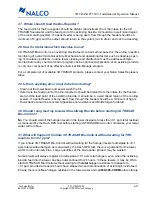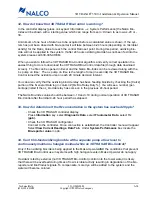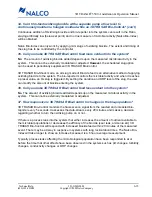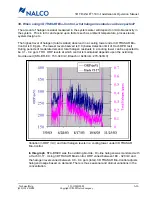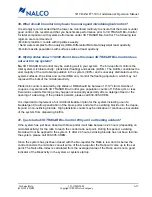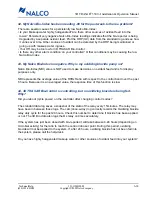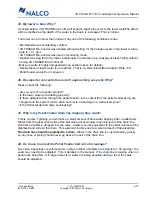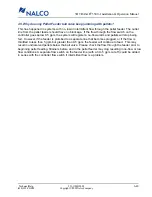
521-OM0108.88
Copyright
2009 Nalco Company
6-25
Technical Help
(630) 305-CHEM
3D TRASAR
5500 - Installation & Operation Manual
15. What key issues I should be aware of before I decide to use 3D TRASAR Bio-
Control? (con’t)
• 3D TRASAR Bio-Control applies oxidizing biocides based on the measured total microbiological
activity — planktonic and sessile. The bulk of the microbiological activity in the system is sessile
and 3D TRASAR Bio-Control responds to this measured activity with oxidizing biocide. 3D
TRASAR Bio-Control will maintain planktonic counts around 10
4
cfu/ml for the most part. But
injured and inhibited microbes (inactive) will be nursed back to health on dip slides or petrifilm and
will show up in the planktonic counts. Planktonic population fluctuations between 10
3
-10
5
cfu/ml
should be expected.
• Note that there will always be systems where microbiological control is not a chemical treatment
issue. There are mechanical, operational and chemical parameters (e.g. dead legs, severely
fouled tower basins, continuous process leaks etc.) that can make bio-control difficult. Good
microbiological control may not be possible where these issues are not separately addressed.
16. What if I don’t use a non-oxidizer or bio-dispersant?
Do not expect optimum performance of 3D TRASAR Bio-Control under these circumstances. To
assist in the penetration of the bio-reporter and the oxidizing biocide into biofilm we strongly recom-
mend the use of a Bio-detergent along with the oxidizing biocide. The detergent should be fed by
slug feed (not continuous). For effective microbial control it is important to vary the stresses in a
system by routinely applying non-oxidizers. Additionally, if algae has been a known issue, an
algaecide such as N-90005 must be used routinely. In systems where non-oxidizer use is not
possible we strongly recommend regular scheduled Oxidizing biocide slugs to vary microbial
stresses.
17. How does 3D TRASAR Bio-Control apply Oxidizing biocide?
Principle: The bio-reporter (Rz) is converted by dehydrogenase, a membrane-bound respiratory
enzyme, to the Bioproduct (Rf). The concentration of Rz and Rf are determined from the intensity of
their fluorescence peaks. A decision on whether to feed oxidizing biocide is made every 20min. The
oxidizing biocide is dosed depending on measured demand.
Bio-Reporter Control: Bio-Reporter is fed into the system as a liquid or a pellet based on the mea-
sured concentration of the Rz signal. The liquid bio-reporter is fed based on dead band control. For
pellets, the decision is made every 20minutes. The number of pellets that will be fed at a time is a
function of the pellet concentration, entered system volume and historical system response.
Fluorometer signals: Rz and Rf intensities are collected every 5 sec and a ratio value (Rf/Rz) is
calculated for each data point. The data collected is validated to ensure that the fluorescence data
is above a lower threshold value and below saturation values for the fluorometer.
Data Processing: A quadratic fit to the collected ratio values is calculated at the end of each 20 min
cycle. A goodness of fit criteria (chi-square) is used to evaluate if the data is too noisy or the fit is
unsuitable. The oxidizing biocide pump is turned on/off depending on the value of the calculated
ratio and the slope of the fit.


